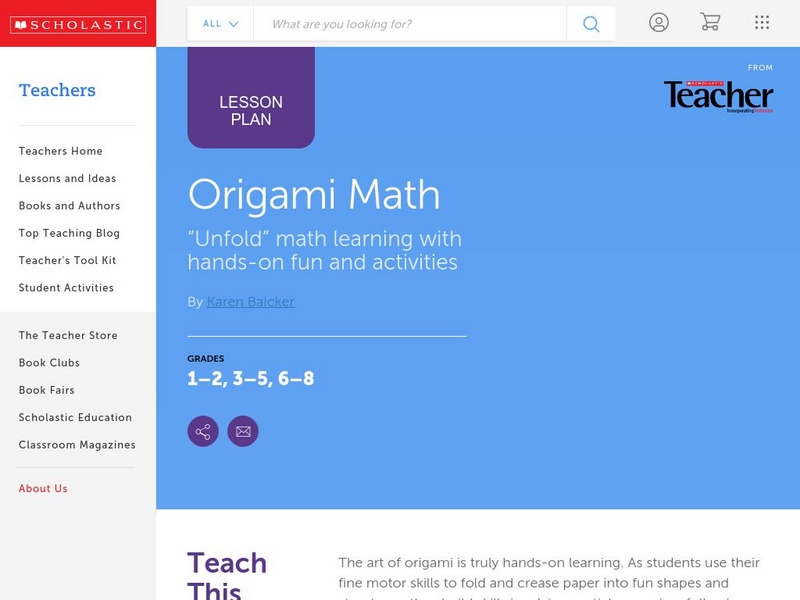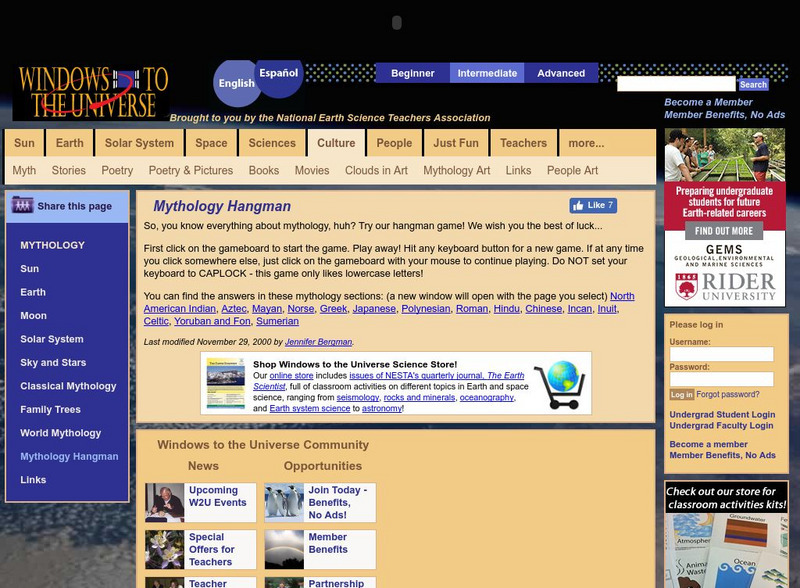National Endowment for the Humanities
Neh: Edsit Ement: Japanese Poetry Tanka? You're Welcome
A poem "which expresses a personal response to nature," the tanka is a form of Japanese writing very similar to the haiku. This lesson plan is a great extension to any study or exploration of Japanese art, culture, and writing. Included...
HotChalk
Hot Chalk: Lesson Plans Page: A Thousand Paper Cranes
This historical fiction lesson plan is for young scholars reading Sadako and the Thousand Paper Cranes by Eleanor Coerr, in which they can discuss the tragedy of Hiroshima and its impact as well as other themes.
Scholastic
Scholastic Instructor: Origami Math
Have you ever tried origami? This Japanese form of paper folding is the basis of this math lesson plan. Students will have an opportunity to integrate their creative side with their math skills.
John F. Kennedy Center
The Kennedy Center: Oceans: A Sensory Haiku
In this lesson plan, students use the ocean and their five senses as inspirations to create their own unique haikus. Lesson provides assessment criteria and a list of sources.
Smithsonian Institution
Smithsonian Learning Lab: Japan: Images of a People
Learners learn to view Japanese paintings, they make a screen, and they learn about the culture of Japan. There are three lesson plans and all allow all needed materials to be downloaded.
Alabama Learning Exchange
Alex: Origami Geometry
Origami (ori-folding, kami-paper) is the traditional Japanese art of folding paper. Students will discover relationships between shapes as they are actively engaged in this hands on geometry lesson to learn basic geometric shapes, their...
National Earth Science Teachers Association
Windows to the Universe: Mythology Hangman
Test your knowledge of world mythology by playing Mythology Hangman, a Java applet and website that features images, maps, and descriptions for beginner, intermediate, and advanced students. It is a great resource to supplement mythology...





